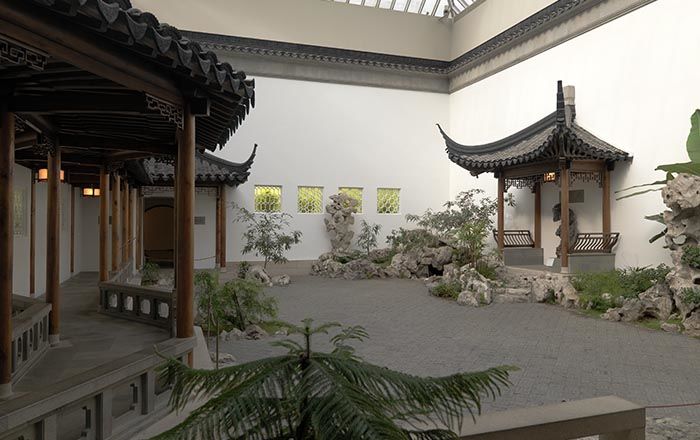“Barrier!” (Kan)
Suda Kokuta 須田剋太 Japanese
Not on view
Powerfully brushed, with architectural presence, the character “Kan,” meaning “Barrier!,” stops us in our tracks. Suda began his career as an artist experimenting with Western figurative painting styles inspired by Vincent van Gogh and other Post-Impressionist painters. He became active in the 1950s in the Japanese postwar avant-garde artistic movements, and through it rediscovered bokuseki, calligraphy of Zen monks of the medieval period. This bold work is in that tradition, and there is a long history of displaying the single large character “Kan” as calligraphy to display in a tearoom alcove.
The religious associations of the character perhaps can be traced back to the The Blue Cliff Record (Hekiganroku), famous compendium of Zen teachings, where it is described as “Yunmen’s Barrier,” referring to the Tang dynasty Chan (Zen) Master Yunmen Wenyan. According to The Blue Cliff Record, at the conclusion of a ninety-day summer training session the Chan teacher Cuiyan Lingcan said, “For your sake I have explained satori, or enlightenment, but it is something which should not be explained, and my eyebrows must have fallen out from Buddha’s wrath. Is that the case? Do I have any eyebrows left?” The Chan monk Baofu Congzhen (d. 928) responded to the kōan by saying, “The thief has a guilty conscience.” His fellow monk Changqing Huileng (854–932) said, “Instead of falling out, they’ve grown more abundant.” Finally, Yunmen said simply, “Kan!”
In the tradition of Zen, such verbal exchanges cannot be grasped at a logical level, but rather should be experienced in a visceral, emotional level, and that is what Suda is seeking—creating a work with strong visual impact that invokes a spiritual ethos associated with the word. Following in the tradition of Chinese and Japanese Zen monks of the past, Suda used a coarse brush constructed not of animal hair, but of willow branch and young bamboo shredded into thin strands. Using a brush fashioned from plant material that does not allow subtle modulation, and writing on non-absorbent paper; the effect is graphic and mesmerizing.
Among contemporary calligraphers, Suda Kokuta achieved a reputation for a vigorous, rebellious, and even confrontational style of brush writing. He became close to those involved with the publication of the art journal Bokubi, which sought to situate calligraphy in the context of modern art movements, and to the Bokujin-kai members who supported and contributed to its publication. Bokubi was edited by the unconventional calligrapher Inoue Yuichi (1916–1985) and documented the group’s activities and discussions on calligraphy and modern art. An article in that journal tracing Suda’s evolution from figurative to abstract painting helped establish his reputation. In his later career, Suda achieved fame for his experimentation with nearly abstract calligraphic compositions, as shown here. He later also joined the Kokugakai (National Painting Association) and immersed himself in the study of writings by Japanese philosophers and texts about Zen Buddhism. He practiced zazen (seated meditation) and applied the precepts of Zen to his creative work, as monks of medieval and early modern times had before him.
This image cannot be enlarged, viewed at full screen, or downloaded.
This artwork is meant to be viewed from right to left. Scroll left to view more.

